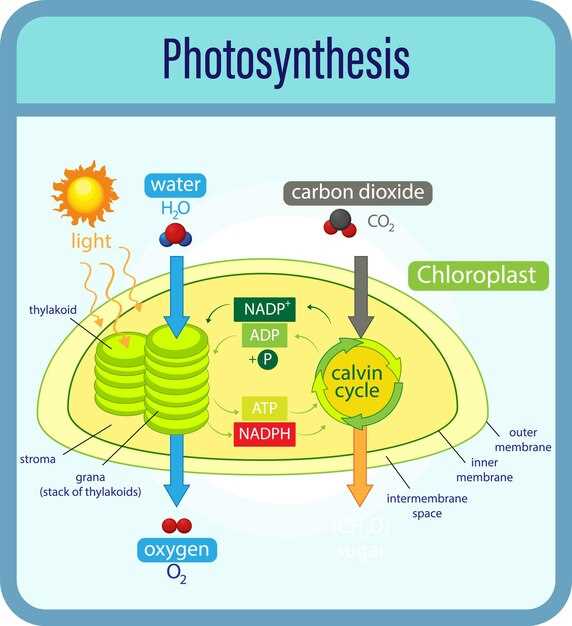
In the world of medicine, there exist two notable pharmaceutical agents that have shown significant impact and effectiveness in managing certain medical conditions. These two agents, although belonging to the same class of drugs, possess distinct characteristics that set them apart from each other. In this article, we will explore the unique attributes and properties of these medications without specifically mentioning their names.
One of these medications is widely known for its ability to regulate cardiovascular function and has been prescribed for various heart-related conditions. It possesses remarkable capabilities in controlling heart rate, reducing blood pressure, and minimizing the workload on the heart. This agent has gained popularity in the medical community and is often prescribed to patients who require treatment for certain cardiac conditions.
The other medication, on the other hand, offers a different set of features that make it equally important in the realm of medicine. It showcases distinct properties that set it apart and make it suitable for certain patients. This pharmaceutical agent, often recommended for cardiovascular ailments, possesses unique mechanisms of action that contribute to its therapeutic benefits.
Although both medications fall into the same category, they have different modes of action and therefore result in diverse outcomes for patients. Understanding these differences is crucial for physicians who aim to provide the most appropriate treatment options for their patients based on individual needs and medical history. Through this article, we will delve deeper into the uniqueness of these medications and shed light on their specific features, benefits, and potential risks associated with their use.
Overview

In this section, we will explore the various uses of these medications and highlight their similarities and differences.
Uses of Atenolol and Propranolol
Atenolol and Propranolol are commonly prescribed medications that belong to the class of beta-blockers. They are primarily used to treat cardiovascular conditions and manage hypertension, also known as high blood pressure.
Managing Cardiovascular Conditions
Both Atenolol and Propranolol are effective in treating various cardiovascular conditions. They work by blocking the action of certain chemicals in the body, which helps to reduce the workload on the heart and lower blood pressure. These medications are often prescribed to individuals who have coronary artery disease, angina, or have experienced a heart attack.
Atenolol and Propranolol are also used to prevent migraines. By regulating blood flow in the brain, these medications can significantly reduce the frequency and intensity of migraine attacks.
Treating Hypertension
One of the main uses of Atenolol and Propranolol is to manage hypertension. Hypertension is a common condition characterized by high blood pressure. These medications help to lower blood pressure by relaxing and widening the blood vessels, allowing the heart to pump blood more efficiently. By reducing blood pressure, Atenolol and Propranolol help to decrease the risk of complications associated with hypertension, such as heart attacks and strokes.
Please consult with your healthcare provider to determine which medication is appropriate for your specific condition.
Uses
In this section, we will explore the various applications and benefits of both atenolol and propranolol. By understanding the uses of these medications, you can make an informed decision about their role in your healthcare.
- Management of high blood pressure: Both atenolol and propranolol can be prescribed by your healthcare provider to help control elevated blood pressure levels. These medications work by blocking certain receptors in the body, leading to a decrease in heart rate and blood pressure.
- Treatment of heart conditions: Atenolol and propranolol are commonly used to manage various heart conditions, including arrhythmias, angina (chest pain), and heart failure. By regulating the heart’s rhythm and reducing strain on the heart, these medications can improve overall heart function.
- Mitigation of anxiety symptoms: Propranolol is often prescribed to individuals who experience performance anxiety or social anxiety disorder. By blocking the effects of adrenaline, it can help reduce physical symptoms such as rapid heart rate, trembling, and sweating associated with anxiety.
- Migraine prevention: Both atenolol and propranolol have been shown to be effective in preventing migraines. These medications work by reducing blood pressure and limiting the frequency and intensity of migraine attacks.
- Management of essential tremor: Propranolol is commonly prescribed for individuals with essential tremor, a neurological disorder characterized by involuntary shaking of the hands or other body parts. By stabilizing nerve impulses, it can help reduce tremors and improve quality of life.
It’s important to note that the uses of atenolol and propranolol may vary depending on your individual medical condition and the recommendations of your healthcare provider. Always consult with a medical professional before starting or altering any medication regimen.
Comparison
In this section, we will explore the similarities and differences between two commonly prescribed medications: atenolol and propranolol.
When it comes to pharmacology, both atenolol and propranolol belong to the class of medications known as beta blockers. These medications work by blocking the effects of adrenaline on the beta receptors located in the heart and blood vessels. By doing so, they reduce the heart rate and blood pressure, resulting in the prevention of certain cardiovascular conditions.
Although atenolol and propranolol share a similar mechanism of action, there are some key differences between them. One significant difference lies in their pharmacokinetics. Atenolol has a relatively long half-life and is known for its selective beta-1 blocking effects, meaning it primarily acts on the beta-1 receptors found in the heart. On the other hand, propranolol has a shorter half-life and exhibits non-selective beta blocking effects, blocking both beta-1 and beta-2 receptors.
The differences in pharmacokinetics also contribute to variations in the therapeutic uses of these medications. Atenolol is commonly prescribed for conditions such as hypertension (high blood pressure) and angina (chest pain). Its selectivity for beta-1 receptors makes it suitable for individuals with heart problems. Propranolol, with its non-selective beta blocking effects, is used not only for cardiovascular conditions but also for other indications such as anxiety, migraine prevention, and even in the treatment of certain types of tremors.
It is important to note that both medications may have side effects. Common side effects of beta blockers include fatigue, dizziness, and decreased exercise tolerance. However, it is essential to consult with a healthcare professional to determine the most appropriate medication and dosage for your specific condition.
Pharmacology

In this section, we will delve into the intricate mechanisms of action and effects associated with the use of these two medications. Understanding the pharmacology behind atenolol and propranolol is crucial in comprehending their distinct characteristics and potential benefits.
- Mechanisms of Action: Atenolol and propranolol differ in the way they interact with the body’s beta-adrenergic receptors. These receptors play a crucial role in regulating various physiological processes, including heart rate and blood pressure. By acting on these receptors, both medications exert their effects, albeit in diverse ways.
- Cardiovascular Effects: The administration of atenolol and propranolol leads to changes in cardiovascular parameters, such as reducing heart rate and blood pressure. However, the specific impact on heart rate and blood pressure can vary between these two drugs, providing distinct benefits for different patient populations.
- Indications: Atenolol and propranolol find application in various clinical conditions due to their unique pharmacological properties. While atenolol is commonly prescribed for hypertension and angina, propranolol is utilized in the management of conditions such as migraines, tremors, and anxiety.
- Metabolism and Elimination: The metabolism and elimination of atenolol and propranolol differ, resulting in variations in their duration of action and overall efficacy. These differences may influence the prescribing decision based on the targeted therapeutic outcome.
- Adverse Reactions: As with any medication, both atenolol and propranolol have the potential to elicit side effects. These can range from mild to severe, and it is essential to understand the pharmacological basis of these adverse reactions to ensure patient safety and optimize therapeutic outcomes.
By gaining a thorough understanding of the pharmacology behind atenolol and propranolol, healthcare professionals can make informed decisions when prescribing these medications, tailoring treatment plans to suit the individual needs of patients.
Side Effects
When considering the potential effects of these medications, it is essential to explore their impact on individuals. Understanding the side effects associated with these drugs provides valuable insight into their usage and allows individuals to make informed decisions about their health management.
Possible Adverse Reactions
There are several potential adverse reactions that may occur when taking these medications. These reactions can vary in severity and frequency depending on the individual.
1. Cardiovascular Effects: Both atenolol and propranolol have the potential to impact the cardiovascular system. They may cause a decrease in heart rate and blood pressure, which can be beneficial for individuals with hypertension or heart conditions. However, it is important to monitor blood pressure regularly, especially during the initial stages of treatment.
2. Respiratory Effects: Some individuals may experience respiratory side effects while taking these medications. This can include shortness of breath, wheezing, or difficulty breathing. If these symptoms occur, it is important to seek medical attention immediately.
Less Common Side Effects
In addition to the potential adverse reactions mentioned above, there are also less common side effects that may occur. These effects are less frequently reported but should still be noted.
1. Central Nervous System Effects: Some individuals may experience changes in mood, sleep disturbances, or dizziness while taking these medications. It is important to communicate any significant changes to a healthcare professional to determine the best course of action.
2. Gastrointestinal Effects: In rare cases, these medications can cause gastrointestinal side effects such as nausea, vomiting, or diarrhea. These symptoms should be reported to a healthcare professional if they persist or worsen.
Please note that this is not an exhaustive list of all possible side effects. It is crucial to consult a healthcare professional for comprehensive information tailored to your specific circumstances.
